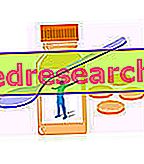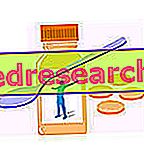Related articles: Onychomycosis
Definition
Onychomycosis is a fungal infection of the lamina and / or nail bed. The most frequently involved fungi are dermatophytes (mainly Trichophyton rubrum ); many of the remaining cases are caused by non-dermatophyte molds (eg Aspergillus, Scopulariopsis and Fusarium ). Patients with chronic mucocutaneous candidiasis may have Candida onychomycosis.
Predisposing factors include nail dystrophies (for example, in patients with psoriasis or following trauma) and contact with people already suffering from onychomycosis or tinea pedis. Diabetes, immunological deficits and peripheral vascular insufficiency also increase the risk of developing the disorder.
Most common symptoms and signs *
- Subungual hemorrhage
- onychogryphosis
- onycholysis
- Brittle nails
- Wavy nails
Further indications
The onychomycoses mainly affect the toenails, which deform and can change color (from white to yellow) or have spots. As the infection spreads, the nail loses its natural transparency, becomes brittle and along the free edge can break.
Mycosis can remain limited to a single nail or can spread to others. According to the methods of invasion of the nail apparatus by the fungi, three clinical varieties are distinguished: distal subungual onychomycosis, superficial white onychomycosis and proximal subungual onychomycosis.
- Distal subungual onychomycosis is the most frequent clinical form; generally starts from the free edge of the nail, to then extend. The nail appears thickened and the distal portion of the lamina is raised, therefore it is detached from the nail bed.
- The white superficial onychomycosis, on the other hand, is characterized by the formation of opaque white patches, with an irregular and friable surface, on the surface of the nail plate.
- In proximal subungual onychomycosis, the affected nail has an area of whitish color at the level of the lunula; often, it is an indication of immunodepression.
The diagnosis is made by direct and cultural microscopic examination to detect the fungal filaments and identify the fungus in question. The exam can be supported by PCR and biopsy. Onychomycosis can be confused with other diseases responsible for very similar manifestations, such as psoriasis, lichen planus and contact dermatitis.
Enamels or specific solutions intended for nail application can improve the healing rate. Many cases are mild and do not cause complications, therefore systemic treatment is not always indicated. Therapy, when necessary, is based on the oral intake of terbinafine or itraconazole. A local antifungal can be used as an adjuvant to oral drugs. To reduce recurrences, the patient must keep the nails short, wear natural fiber socks and change them often, dry the feet thoroughly after bathing and do not walk barefoot in public places.



